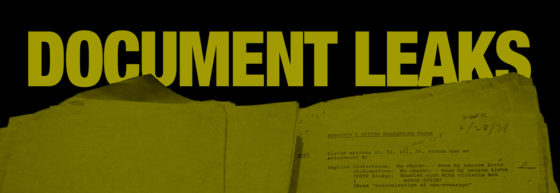Published today in Independent Science News: “How EPA Faked the Entire Science of Sewage Sludge Safety: A Whistleblower’s Story” by Dr David Lewis. This article is based on a chapter in Dr. Lewis’ new book: Science for Sale.
The US EPA’s 503 sludge rule (1993) currently allows application of treated sewage sludges (aka biosolids) to farms, forests, parks, schools, playgrounds, homes, and gardens. Biosolids are the insoluble wastes that settle out at water treatment plants. They contain complex mixtures of industrial chemicals, heavy metals, mercury, phthalates, flame retardants, hormones, pharmaceuticals, and pathogenic agents. While working at the EPA, senior scientist David Lewis published evidence showing a New Hampshire teenager Shayne Conner died, and other neighbors were harmed, from exposure to land-applied sewage sludge. Lewis became involved further when dairy herds on two Georgia farms were poisoned after grazing on sludged land.
In “How EPA Faked the Entire Science of Sewage Sludge Safety: A Whistleblower’s Story” Dr. Lewis details an unprecedented case of scientific misconduct. Approved at high levels, it spanned the EPA, the USDA, local and city municipalities, Synagro Technologies (a waste management company), leading universities, and the National Academies of Science. This pan-institutional misconduct falsely presented sewage sludge as safe, has hidden the evidence that it was not, falsified the reported contents of municipal sludges, and smeared Dr Lewis with a scientific misconduct charge after he blew the whistle. As a consequence, sewage sludges can, and are, legally used as fertilizers when in fact they are highly polluted industrial wastes.
For the full article read: “How EPA Faked the Entire Science of Sewage Sludge Safety: A Whistleblower’s Story” by Dr David Lewis. It is based on a chapter in Dr. Lewis’ new book: Science for Sale: How the US Government Uses Powerful Corporations and Leading Universities to Support Government Policies, Silence Top Scientists, Jeopardize Our Health, and Protect Corporate Profits.
For Dr. Lewis’ scientific articles on biosolids see:
Lewis, David L., and David K. Gattie. “Pathogen Risks From Applying Sewage Sludge to Land.” Environmental Science & Technology 36.13 (2002): 286A-293A.
Lewis and Gattie review the list of known pathogens reported in land applied sewage sludge. They assess the disease risk from these pathogens and point out this risk will be greatly exacerbated by chemical toxins also present in sludge. Chemical irritants can predispose skin to infection. Such chemical-pathogen interactions must be taken into account in order to develop science-based policies that adequately protect the public. Lewis and Gattie’s insightful analysis is still valid today. The short and long-term health and environmental effects of land applied sewage sludge remain key under-researched areas of public interest science.
Lewis, David L., et al. “Interactions of Pathogens and Irritant Chemicals in Land-Applied Sewage Sludges (Biosolids).” BMC Public Health 2.1 (2002): 11.
Sewage sludge, applied to farmland or residential land, contains pathogens and toxic chemicals. Lewis et al. report results from their health survey of residents living within approximately 1 km of biosolid land application sites. Residents “generally complained of irritation (e.g., skin rashes and burning of the eyes, throat, and lungs) after exposure
to winds blowing from treated fields. A prevalence of Staphylococcus aureus infections of the skin and respiratory tract was found. Approximately 1/4 of 54 individuals were infected, including 2 mortalities (septicaemia, pneumonia)“.
Gattie, David K., and David L. Lewis. “A high-level disinfection standard for land applying sewage sludges (biosolids).” Environmental health perspectives 112.2 (2004): 126.
Gattie and Lewis scientifically assess hazards like bacterial regrowth after sludge application, the production of bacterial toxins, and chemical-pathogen interactions. They propose new high standards for sludge treatment and careful and appropriate monitoring. They suggest this would reduce the adverse health consequences from land application of biosolids.
For more on the hazards of Sludge (Biosolids) see:
Harrison, Ellen Z., and Murray McBride. “Case for Caution Revisited: Health and Environmental Impacts of Application of Sewage Sludges to Agricultural Land.“ Cornell Waste Management Institute, Dept. of Crop and Soil Sciences, Rice Hall, Cornell University, Ithaca, NY, URL: http://cwmi. css. cornell. edu/case.(2009).
Published by the Cornell Waste Management Institute, this invaluable report summarizes the key issues in biosolid safety and lists relevant scientific papers. These raise concerns about the agricultural application of sewage sludge and its affects on livestock, human health and the environment. New research documents hazards due to pathogens, heavy metals, endocrine disruptors, antibiotics (including microban), flame retardants and other persistent organic pollutants. This is the best current overview of biosolids science.
For an illuminating non-technical introduction to the origins of sewerage systems and the creation and disposal of toxic sludge see: Civilization & Sludge: Notes on the History of the Management of Human Excreta by Abby A. Rockefeller.
Links to Other Websites with Scientific Resources on sludge/biosolids
Cornell Waste Management Institute: Sewage Sludge Links to scientific and policy documents on health and risk assessment, rules, use, and guidelines for sludge.
Sludgefacts.org “Collect(s), analyze(s), and disseminate(s) scientific information about the risks of land applying sludges” and “advocate(s) regulatory reform that protects public health, agriculture, and the environment.”
Sludge News Technical Resources Links to scientific articles or abstracts describing sewage sludge research.
SourceWatch: Scientific Studies of Sewage Sludge Excellent source of scientific studies on different sludge issues — especially its toxic constituents but also hazards from land application and human exposure. Describes findings and links to articles.
